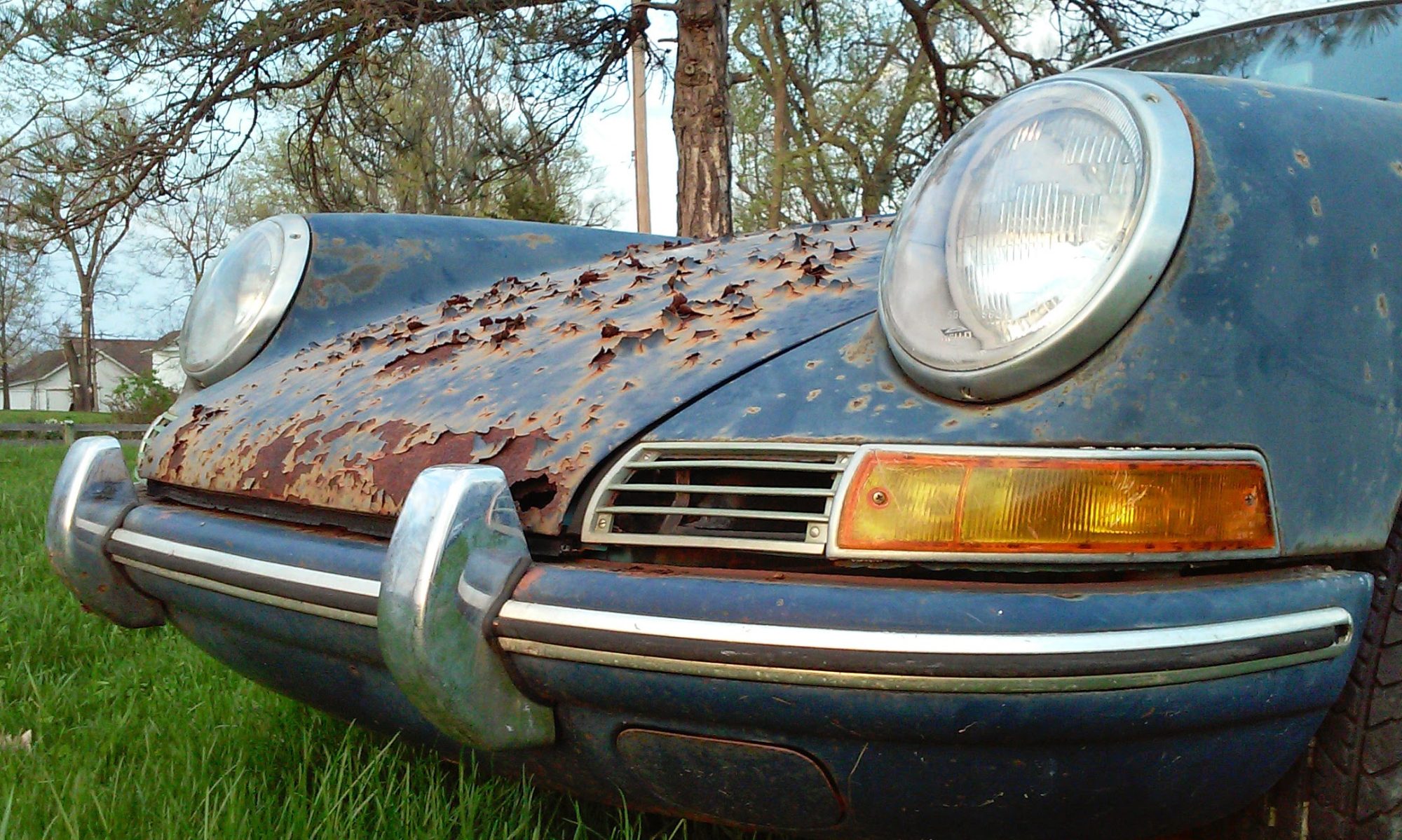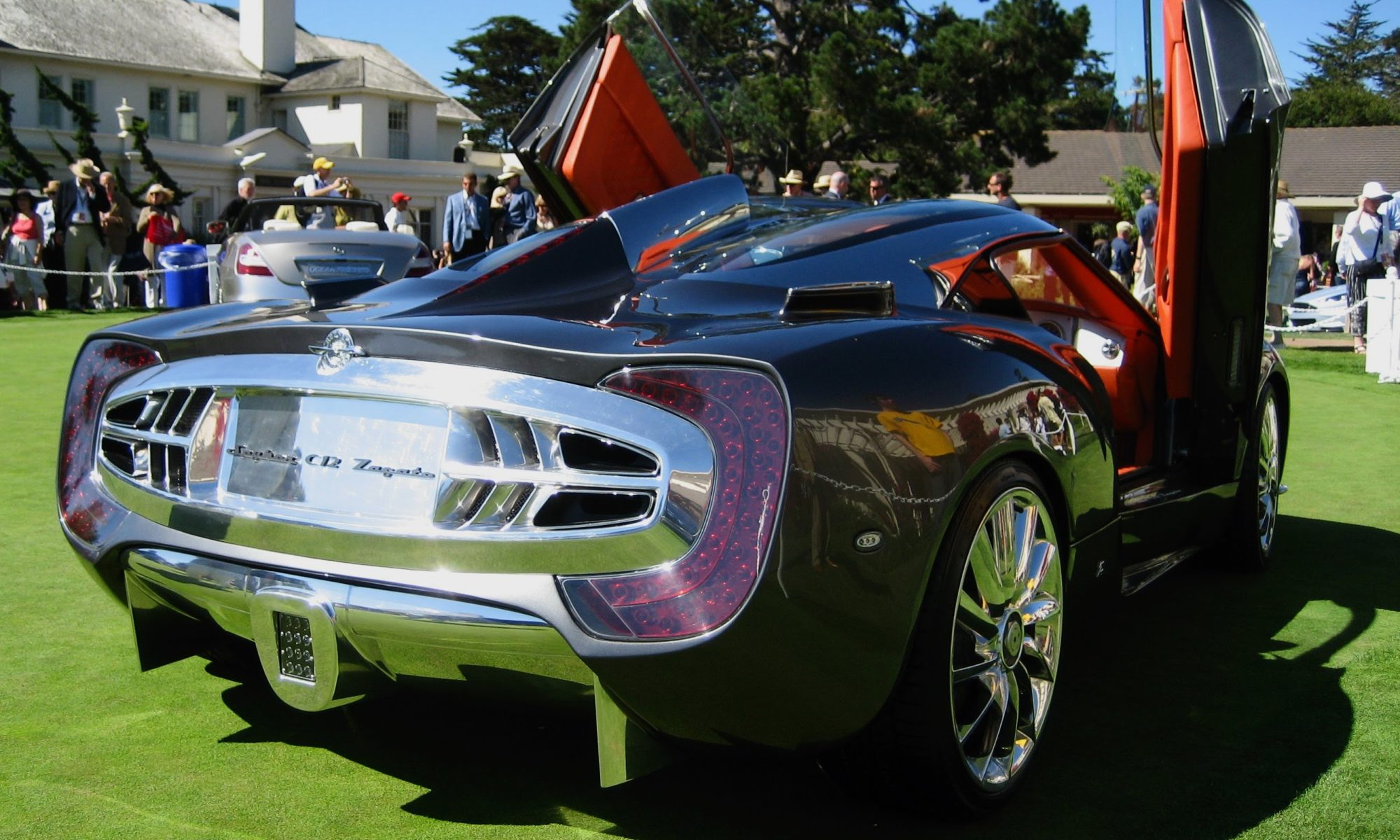Update: December 8, 2014 Visionary Vehicles has a current website and rebirth plan in the news as of May 2024.
Originally published January 2008
Interview with CEO & Founder Malcolm Bricklin.
It goes without saying that Malcolm Bricklin is a dreamer. He swung not once, not twice, but three times at importing foreign vehicles into the United States. Subaru was a hit, Bertone badged X1/9s and Yugo, not so much. Oh yes, and then there was the Bricklin. It was a full-scale production vehicle, not a kit. But plagued with poor quality, high production costs and slow sales, the company located in New Brunswick, Canada with government backers of the same name closed up shop. But as the old adage goes, you better learn from your mistakes ‘ay?
His next plan, the launch of new car company Visionary Vehicles is not for the faint of pocketbook. Most experts agree the bank roll needed in the US is in the billions, not millions. G-force junkies with a V-12 source and a hunkerin’ of a good plan need not apply, because Malcolm isn’t talking about building hundreds of vehicles. He’s talking about building hundreds of thousands of vehicles all within a few years of launch. The first production order for 150,000 luxury sedans will hit the market in 2010. That’s more then Porsche, Jaguar, Land Rover and Mini will do this year combined. Volvo, Audi and Suzuki hover around the 100,000 annual sales mark while even his alma mater Subaru hasn’t crossed the 200,000 barrier with 40 plus years in the market. If it seems like a really tall order; that’s the point.
——
MCM: The 150,00 units you are planning to order, is that US market only?
Bricklin: US market only. We have distributors that are calling us from Europe and Asia but we are talking about having a base of a quarter of a million vehicles before going anywhere besides the United States.
MCM: A quarter of a million?
Bricklin: We are planning to add a new vehicle every year for three years. The first will be a four door luxury automobile, the second will be a seven passenger, luxury crossover all between $30,000 and $40,000.
—–
To negotiate low costs to build a vehicle that competes with the big boys you need to order in bulk. Numbers that even Costco would be proud of. But what kind of low cost car are we talking about? The US has cut their teeth on the likes of Fiat, Renault, Yugo, Hyundai, Kia and soon the Chinese will make their play. Mr. Bricklin has to have something good. No check that, he has to have something great to compete. He thinks he will. Visionary Vehicles is cultivating a PHEV, plug-in hybrid electric vehicle, aspiring to Mercedes-Benz style, comfort and luxury for only $35,000. The engine never actually runs the car, it’s only there to charge the battery for long trips. This car will get 100 miles per gallon, have a 10 year/200,000 mile warranty and a diagnostic system that can be tapped via a cell phone while being serviced at your home or office. We think that sounds pretty darn good.
—–
MCM: But how do you overcome obstacles that the deep pockets of a Honda or Toyota can afford with a head start in the hybrid electric market?
Bricklin: We’ve probably spent 30 million over the last two years in various other ventures learning the things we are going to put in play now. We will be closing on another 30 million in private placement this month. We are raising from the dealers a half a billion dollars. Then, they will place orders for 7.5 billion dollars and finally the dealers are putting up letters of credit for another half a billion dollars.
—–
8.5 billion dollars should give him a production run with no subsidizing needed and instant profitablility on each vehicle. But he’ll tell you the secret to what VVCars is doing is not really the car. He plans to set up an infrastructure of 250 of the finest dealers in the country. They will be picked on the basis of top CSI scores and of course their deep pockets. Like many, he’s studied successful franchises and in particular Saturn. But probably more important and unique to his life, he has learned from multiple failures.
Malcolm knows dealers are the make and break point of any manufacturer’s sales. If you aren’t convinced of it, just try to sell vehicles direct online or look at previous franchise strategies. When Kia started in the early 90’s for example, Kia asked for less than a $30,000 in marketing, tools and signage. The marketing/showroom funds comprise less than $10,000 of that total.
In return they received dealership displays, interactive units, car toppers, posters, ad planners, etc. to make a Kia showroom. If the materials made it out of the box, rejoice. When displays ended up pushed in the corner after several DSM visits, be glad the dealers were still ordering cars. Five years later, Kia was just completing their nationwide rollout, had a fair amount of dealer turnover and still hadn’t crossed 100,000 units.
With Visionary’s vision, dealer incentive doesn’t simply come from the hope of great sales. Every one of his dealers will be an owner/investor in the company that shares in company gains as well. That should move dealer commitment of their new franchise to new levels not normally seen in today’s market.
—–
MCM: So, how many dealers do you have signed up right now?
Bricklin: Here’s what we’ve done. We’ve interviewed hundreds of dealers and picked one, Jamie Auffenberg who bought four dealerships, and we have put him on our board. He’s going to be the first director of a major car company that’s a dealer. What that is showing the world, is that when we say our dealers are our partners, that is the truth. In January, we will start allowing dealers to come in and start signing contracts.
MCM: How many dealers do you need before you launch?
Bricklin: We have found out the when talking to these dealers that 125 dealers could cover all 250 territories. So, each dealer would cover two territories. There are 20,000 new car dealers and 40,000 used car dealers, so there are plenty of dealers that are going to want to do this thing. We think our only problem will be getting the right dealers and signing up dealers too fast. Because those are the ones we are going to live with for the rest of our lives. When all the dealers are signed up, we are going to take the company public, so their investment immediately becomes liquid and they can sell shares if they want to earn back their initial investment.
MCM: One of the concerns we are seeing with manufacturers is their DSI [dealer satisfaction index] scores need improvement . What are your thoughts and plans around addressing this area?
Bricklin: When you talk about electric hybrids, you have less things that go wrong with them and less things that need maintenance. You have more things that can be fixed in a modular situation where you pull out a module and fix a module and don’t worry about fixing [it] at the dealership. Just pull it out and put in a new one. It also allows us to go to people’s houses or place of business so they never have to visit the dealer.
MCM: In terms of environmental consciousness, the landscape seems to be changing quite quickly and manufacturing is really the dirty little secret of car making. Can you talk about carbon footprint, the manufacturing process, are there going to be recycled materials in the car?
Bricklin: In developing the car itself, we are looking at the end and the end of the car’s life. Are we looking at anything that is toxic? Are we looking at anything that can’t be recycled? So we are going down the road and trying to make the car as perfect as we can and that’s not a hard job to do any longer. That’s number one. Number two, the car is going to be compared to a Mercedes S-Class in size and weight and performance. Compared to that, we save seven tons of carbon per year, per every 12,000 miles driven over the Mercedes-Benz. It’s a very major thing. In fact, the profile of the people who will use our car, 80% will never use any gasoline because the first 40-50 miles will come from the plug and they’ll only travel 12,000 miles a year.
MCM: It all sounds really good, but you’ve got a lot of manufacturers that are struggling to reach 100,000 vehicles a year with good quality affordable cars. Do you think that 150,000 vehicles is overshooting the market?
Bricklin: Not at all. When we’ve talked to focus groups about a luxury sedan for $35,000, that is clean, that gets over 100 miles to the gallon they get so excited. We’re not talking about guys who buy Mercedes-Benz or BMW, we’re talking about guys buying Toyotas, Hondas or Nissans stepping up. A little bit higher than where they are going right now because the average vehicle price is $29,000 in the market today.
MCM: Who’s going to be the designer of this first car?
Bricklin: Well, the first car ironically is the designer I had design my first Bricklin, Herb Grasse. He was a young man that then was working for Chrysler and Ford but came out of the Pasenda design school. I called him up and said if you’re still alive, I’d like you to design my second Bricklin. But this one will be, of course, without gull-wing doors.
—–
When looking at the hybrid electric market, the one thing we may agree on is that the Prius was the right vehicle at the right time and that’s half the battle to launching a success. But boy it was one ugly car. Herb Grasse is still alive. But unlike his hair, I don’t think his designs have improved much with age. Malcolm is up to bat again as coach of team Visionary Vehicles. This time it’s the bottom of the ninth for the 68 year old. Lead off hitter is Herb Grasse with Quality Product in the two-hole. For Visionary Vehicle’s sake, let’s hope both get on base so Joe Dealer or John Q. Public can knock one out of the park for him.
Bricklin Collection Plug-in Hybrid Electric Luxury Sedan EVX/LS



